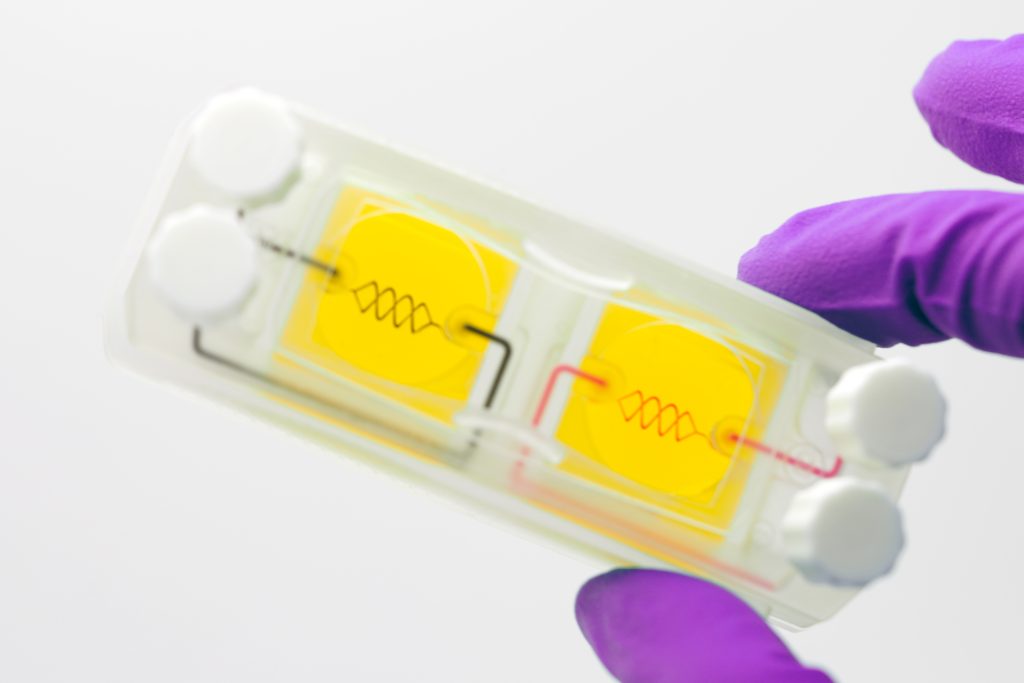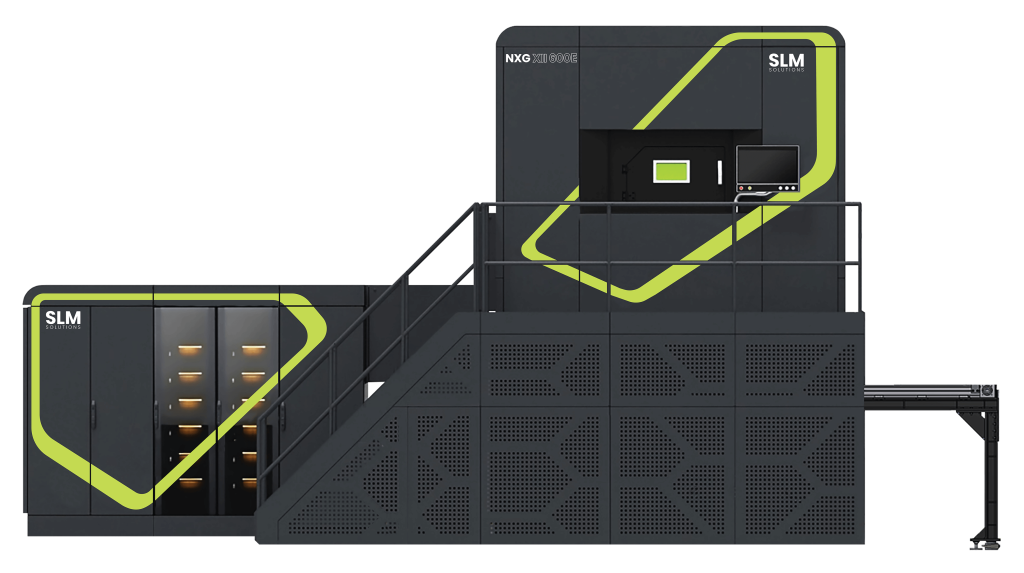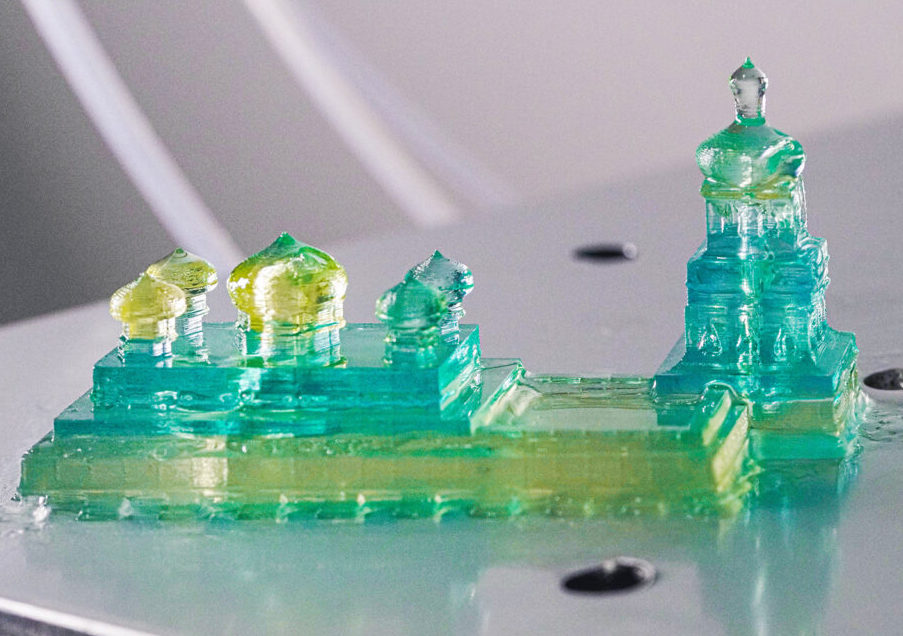Interested in reading more about the year’s biggest 3D printing news? You can access our full 3D Printing Industry Review of the Year series here.
September saw the return of the International Manufacturing Technology Show (IMTS) at McCormick Place in Chicago. While usually held every other year, the COVID-19 pandemic meant this year’s edition was the first since 2018. As such, the event doubled up as both a chance for production technology developers to showcase their latest products and for attendees to network and reconnect.
Away from the 3D printing business world, which also saw significant moves from Nikon and 3D Systems, researchers unveiled technological advances with the potential to create future manufacturing opportunities. Construction 3D printing made progress, too, not just in the lab but in practical applications, with the UK getting its largest ever 3D printed infrastructure.
Read on for more from Carbon, Nikon, 3D Systems, Systemic Bio, the City University of Hong Kong, Optisys, Hybrid Manufacturing Technologies, SLM Solutions, the UK Ministry of Defence, Changemaker 3D, BAM, Weber Beamix, and the University of Virginia.

IMTS returns from COVID-induced hiatus
As always at IMTS, this year’s show allowed 3D printing firms to exhibit directly alongside the developers of other manufacturing technologies like injection molding or CNC machining. This provided a rare opportunity to weigh up the future of 3D printing, identify where it stands in the wider world of manufacturing, and see where the latest advances could come from.
As discussed in 3D Printing Industry’s IMTS breakdown, one of the headline announcements at the event was the launch of HP’s Metal Jet S100 3D printer. The firm’s long-awaited entry into the metal 3D printing space is designed to work with Metal Injection Molding (MIM) materials rather than spherical powders. At the time, it was said this would allow system users to drive down their cost-per-part.
Nexa3D also debuted its new high throughput QLS 820 3D printer, while Inkbit showcased the Vista machine it launched earlier in the year, complete with an algorithm that allowed it to achieve a then-world-record build plate density of 42%.
Elsewhere, 3D Systems showed off Certified CuNi30, a corrosion-resistant copper-nickel alloy initially designed for Huntington Ingalls Industries subsidiary Newport News, that has since been given a wider launch. In software, meanwhile, Oqton’s CEO Ben Schrauwen outlined how his company’s software first found dental applications, but it is now gaining traction in energy and oil & gas.

Nikon, 3D Systems make strategic moves
Following its $622 million bid for SLM Solutions earlier in the month, Nikon acquired shares in Optisys and Hybrid Manufacturing Technologies. These deals saw the company increase its stake in metal 3D printing and take another step towards the digital manufacturing-led goals outlined in its Vision 2030 program.
3D Systems, on the other hand, spun off its 3D bioprinting subsidiary, Systemic Bio. Set to utilize the technologies developed as part of its parent firm’s Print to Perfusion program as well as those of its other subsidiary Allevi, the company is developing tissues for a human vascularized integrated organ system (h-VIOS) platform.
“In forming Systemic Bio, we are applying these core technologies to specifically address critical needs within the pharmaceutical market,” said Dr. Jeffrey Graves, CEO of 3D Systems. “With our potential to ultimately manufacture hundreds or even thousands of custom-designed, proprietary human tissue models, pharmaceutical companies can more rapidly and accurately evaluate the efficacy of developmental drugs in the lab, with the goal of reducing development time.”
Construction momentum continues to build
In the field of construction, additive manufacturing made gains on multiple fronts during September. BAM and Weber Beamix built a 3D printed footbridge over a UK motorway in a process that was thought to lower the structure’s carbon footprint, reduce any risk of disruption and keep down costs by minimizing the use of molds.
Also in the UK, ChangeMaker 3D worked with wastewater service provider United Utilities to 3D print a 1.8-meter wastewater chamber. By additive manufacturing the bridge using CyBe Construction technology, the pair managed to make it safer to build, in addition to drastically reducing its lead time to less than four hours.
Elsewhere, in more experimental applications, researchers at the University of Virginia (UVA) unveiled a novel method of 3D printing living soils that could be used to construct future carbon-negative buildings. With further R&D, the UVA team said their seed-impregnated soil ‘ink’ could replace less sustainable construction materials.

The US and UK turn to AM in defense
Another trend that emerged in September was the strong appetite of the UK Ministry of Defence (MoD) and the US Department of Defense (DoD) to adopt 3D printing in military applications. That month, SLM Solutions announced that it had been subcontracted by the Concurrent Technologies Corporation to develop the ‘world’s largest metal 3D printer’ for deployment by the US Air Force.
In essence, the firm revealed that it was working on a new version of its NXG XII 600 3D printer with a 1.5-meter Z-axis. Set to be known as the ‘NXG XII 600E,’ the upcoming system is being designed to overcome the limits of current additive manufacturing equipment when it comes to creating long parts with critical defense applications.
In the UK, it was announced that an MoD manufacturing supplier network was in the process of being established, with the ambition of enabling military-grade spare parts to be 3D printed on demand. As part of ‘Project TAMPA,’ the MoD aims to create a multi-supplier framework with the capacity to 3D print lighter, stronger metal parts as and when they’re needed.

Uncovering the next 3D printing advances
So often in 3D printing, big breakthroughs come from university-developed technologies, and the results of several such projects were unveiled throughout the month. At the City University of Hong Kong, scientists came up with a method of partially carbonizing parts as a means of making 3D printed lattices 100 times stronger.
Researchers at Stanford University also announced the development of a ‘five to ten times faster’ resin 3D printing process. Essentially a fresh take on the Continuous Liquid Interface Production (CLIP) method developed by Carbon, the team’s ‘iCLIP’ approach sees the oxygen-filled ‘dead zone’ at the bottom of a CLIP printer’s resin pool repurposed.
By pumping extra material into this space, the scientists managed to accelerate the process and unlock unique conduit-integrated part designs. Carbon Co-Founder Joseph DeSimone, who turned out to be one of the co-authors of the team’s study, said the technology could “help to usher in a new era of digital manufacturing,” and “enable the fabrication of complex, multi-material objects in a single step.”
To stay up to date with the latest 3D printing news, don’t forget to subscribe to the 3D Printing Industry newsletter or follow us on Twitter, or liking our page on Facebook.
2022: 3D Printing Industry review of trends and news
2021: 3D Printing Industry review of trends and news
While you’re here, why not subscribe to our Youtube channel? featuring discussion, debriefs, video shorts and webinar replays.
Are you looking for a job in the additive manufacturing industry? Visit 3D Printing Jobs for a selection of roles in the industry.
Featured image shows the staircase at the entrance to McCormick Place, home of IMTS 2022. Photo by Paul Hanaphy.



